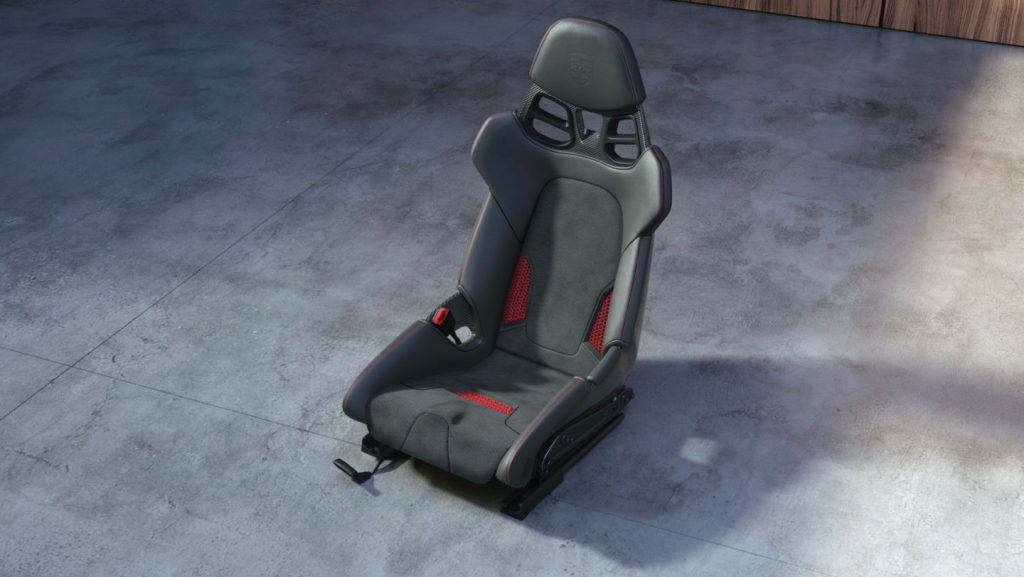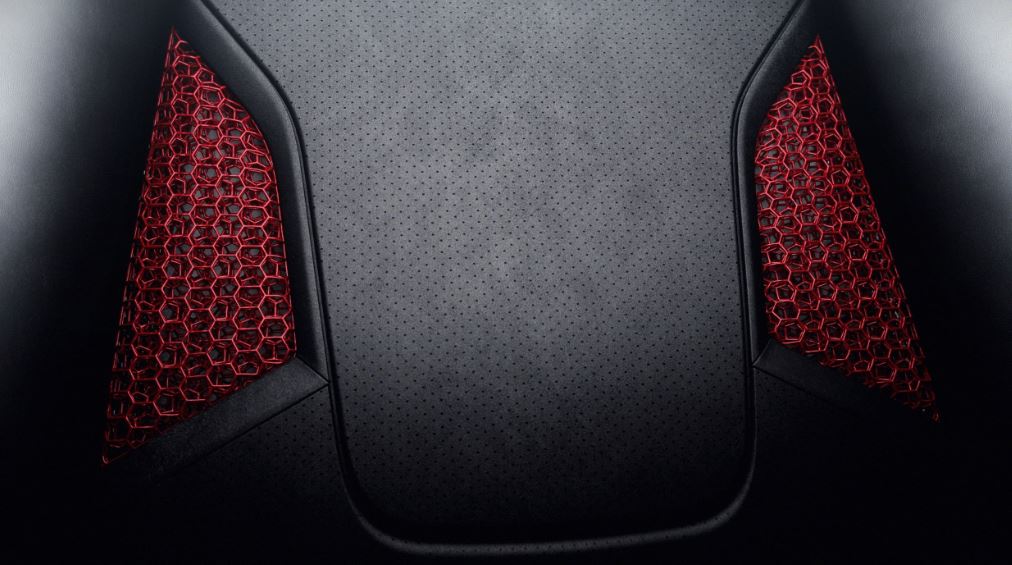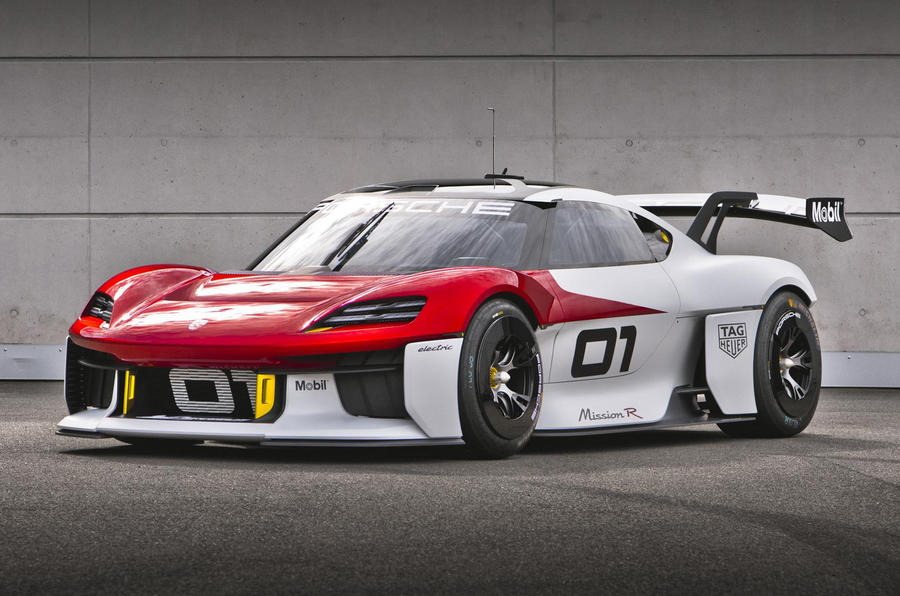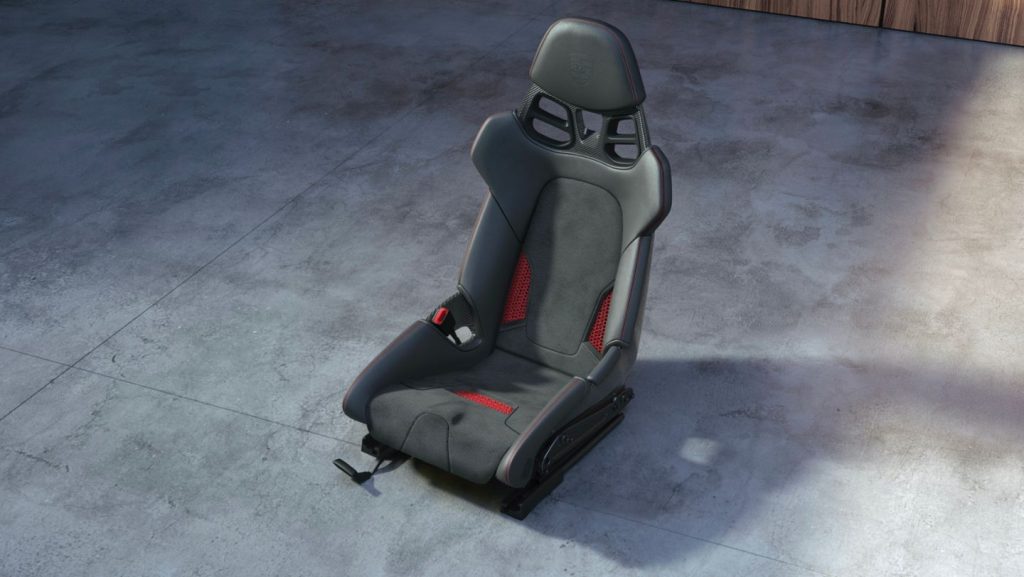Voting shortlists for the 2021 3D Printing Industry Awards are now open. Who do you think should receive top honors this year? Have your say now.
Interested in tuning in? The Youtube livestream link is also live, so viewers can now subscribe and set reminders to ensure they don’t miss out.
Sports car manufacturer Porsche has launched a new 3D printed bucket seat that can be tailored to suit individual drivers, helping make them more comfortable while sending their lap times tumbling.
Available to order for specific models of the Boxster, Cayman and 911 supercars, the bodyform seats feature 3D printed cushioning and backrests, with customizable stiffness settings. Having led their R&D at the fearsome Nürburgring Nordschleife race track, Porsche test driver Lars Kern says that the lightweight seating offers adopters a unique driving experience, similar to that of an actual racing driver.
“During the initial test drives I was impressed by the ergonomics – the slightly lower seat position and improved thigh support are similar to what you get from a seat in a racing car,” explains Kern. “The passive ventilation is impressive too.”
“Seats adapted to individual drivers have been available for a long time in professional motorsport. Now Porsche also offers a road-approved customization with different rigidity grades as standard.”

A 3D printed race seat fitting?
Unveiled last year, Porsche’s new 3D printed seating is based around the design of its existing bucket seats, in that it features the same sandwich-like construction. Although the seat’s base layer is composed of standard polypropylene, this is now bonded to a breathable comfort layer, consisting of a mixture of polyurethane-based 3D printed materials.
Similarly, the seating’s exterior may be made from track-ready non-slip Race-Tex, but its window like panels also show full-color sections of its 3D printed lattice-shaped internals, lending it an unmistakably additive manufactured feel.
This middle section is also customizable, allowing customers to choose how firm they want their seat to be, between hard, medium or soft settings, while the structure’s overall weight reduction of 8%, ergonomics and passive climate control are designed to provide users with a level of comfort, similar to that gained via a professional racing driver’s ‘seat fitting.’
“The seat is the interface between the human and the vehicle, and is thus important for precise, sporty handling,” Michael Steiner, Member of the Executive Board for Research and Development at Porsche explained last year. “That’s why personalised seat shells customized for the driver have been standard in race cars for a long time now.”
“With [our] 3D printed bodyform full-bucket seat, we’re once again giving series production customers the opportunity to experience technology carried over from motor sports.”

Porsche takes to the track
Since announcing its new seating in March 2020, Porsche has sought to test it in practise via a series of Manthey-Racing track days at the iconic twenty-kilometer Nürburgring Nordschleife circuit. During this pilot phase, the company says that it gained “valuable customer feedback,” which has enabled it to make the “final adjustments” needed to pave the way for a full launch.
As a result, the firm has now made its 3D printed seating available for all Porsche models that are conventionally offered with its full bucket seat, at a cost of around €2,677 each. In terms of compatibility, this means that Boxster or Cayman 718, 981 and 982 drivers in addition to 911, 991 and 992 owners, can have their seats retrofitted on either the drivers’ or passengers’ side at their nearest Porsche Center.
To streamline this process, the firm has added the seating to its Tequipment offering, through which it normally markets racing equipment such as magnesium wheel sets and lap timing gear, and by February 2022, it intends to integrate its new product into its Porsche Car Configurator and the wider Porsche Exclusive Manufaktur program as well.
At this year’s IAA Mobility motor show, Porsche also unveiled the design of its next-gen concept race car known as the ‘Mission R,’ which features the same 3D printed bodyform full bucket seats. Designed to offer a sneak peak of what customer motorsport could look like in around five years’ time, the event prototype reportedly featured a natural fiber-reinforced plastic body, and multiple 3D printed parts.

Additive-optimized sports cars
While 3D printing has often been used to create small individual parts for performance sports and race cars, there’s evidence to suggest that the technology is now finding more critical end-use applications. In New Zealand, for instance, Rodin Cars is developing a fully-3D printed gearbox for its ‘FZERO’ hypercar, which is capable of handling the torque generated by the vehicle’s 1,000 bhp engine.
Similarly, British sports car manufacturer Aston Martin has unveiled a partnership with Domin and Cranfield University, in which it seeks to create a ‘world class’ suspension system. Through their collaboration, the firms ultimately aim to harness Domin’s 3D printing-based technology to develop novel suspension of such a high standard, that it can be fitted to one of Aston Martin’s production vehicles.
In more motorsport-oriented applications, NASCAR team Stewart-Haas Racing has also adopted additive manufacturing in pursuit of automotive performance. Using Autodesk’s Fusion 360 generative design software and Renishaw’s RenAM 500Q system, the team has been able to 3D print 32% lighter brake pedals, which are capable of withstanding the stresses of a full-race distance.
To stay up to date with the latest 3D printing news, don’t forget to subscribe to the 3D Printing Industry newsletter or follow us on Twitter or liking our page on Facebook.
For a deeper dive into additive manufacturing, you can now subscribe to our Youtube channel, featuring discussion, debriefs, and shots of 3D printing in-action.
Are you looking for a job in the additive manufacturing industry? Visit 3D Printing Jobs for a selection of roles in the industry.
Featured image shows Porsche’s new 3D printed bucket seat in ‘Guard Red.’ Image via Porsche.
